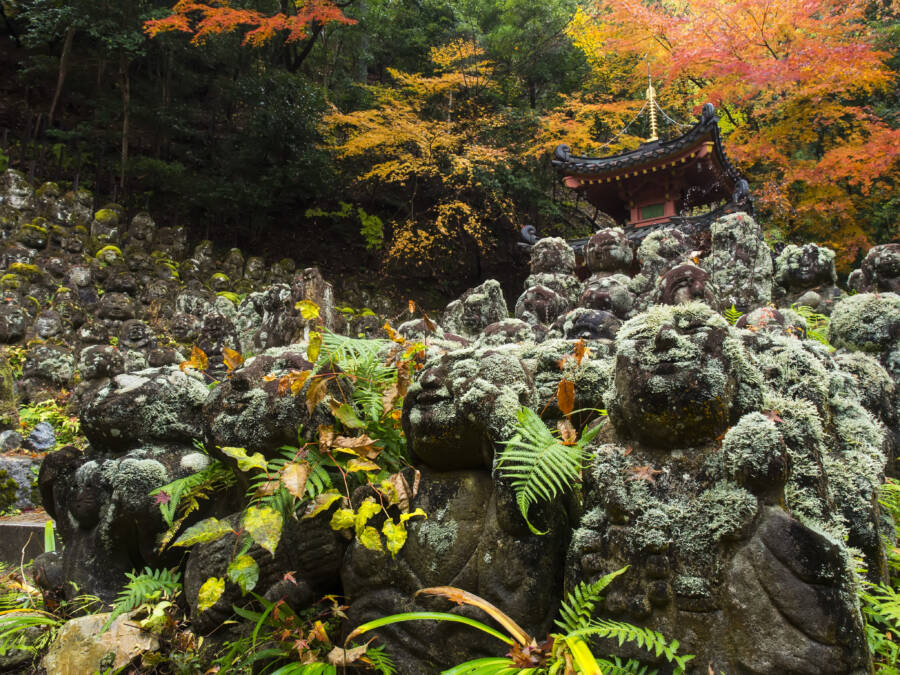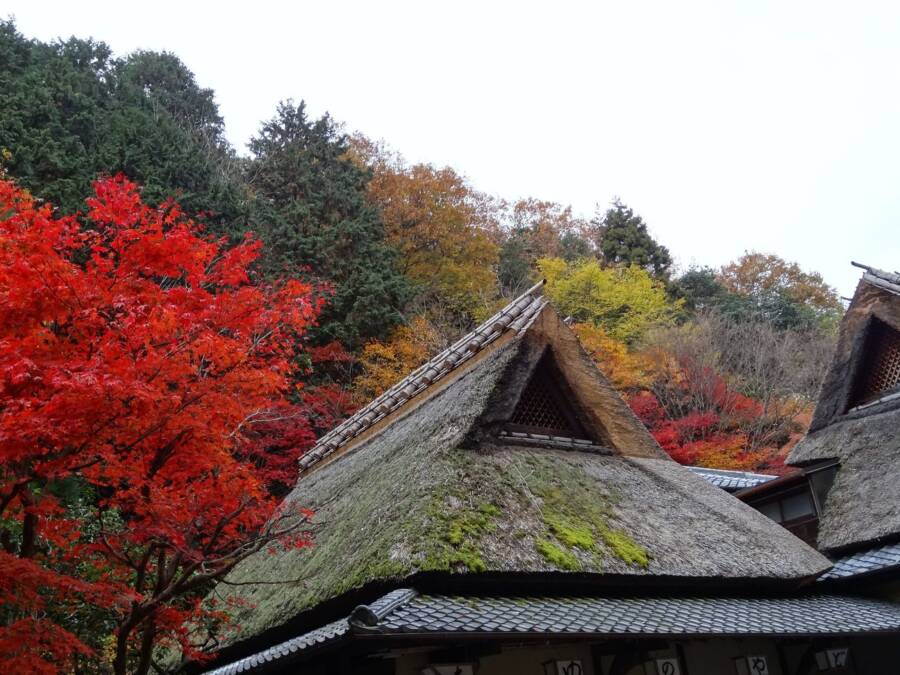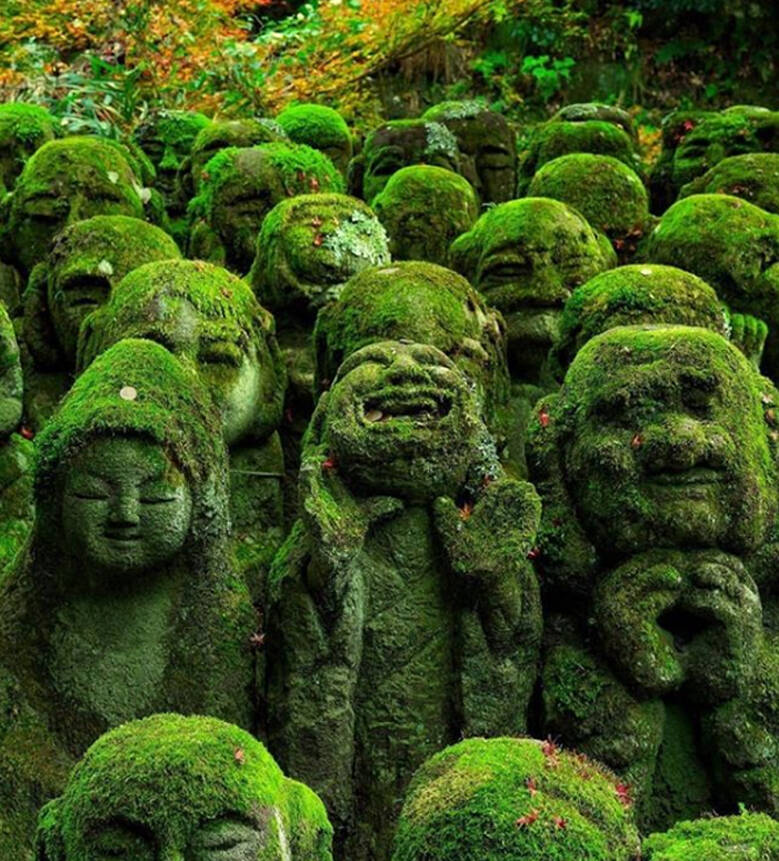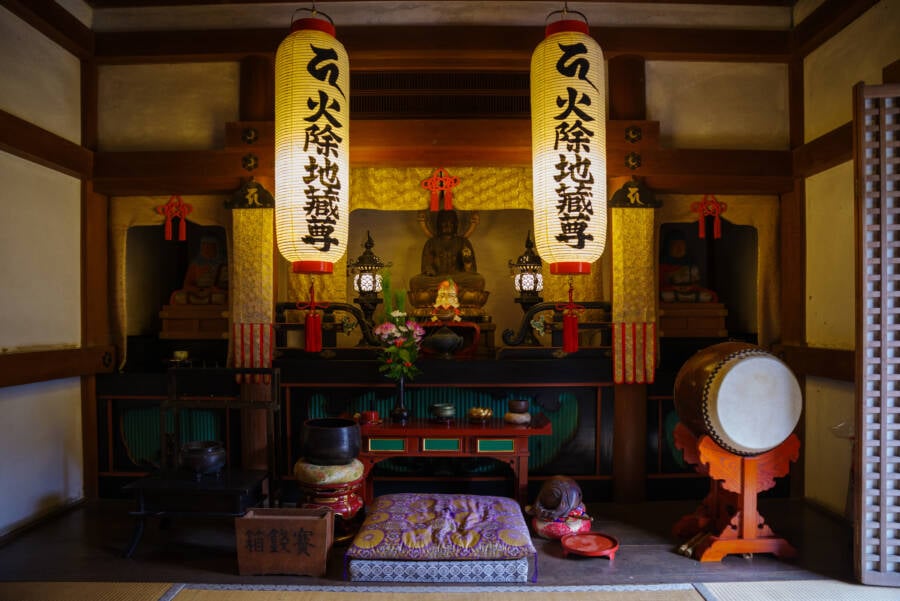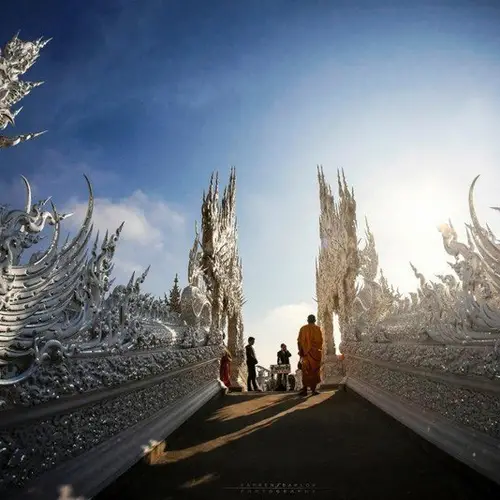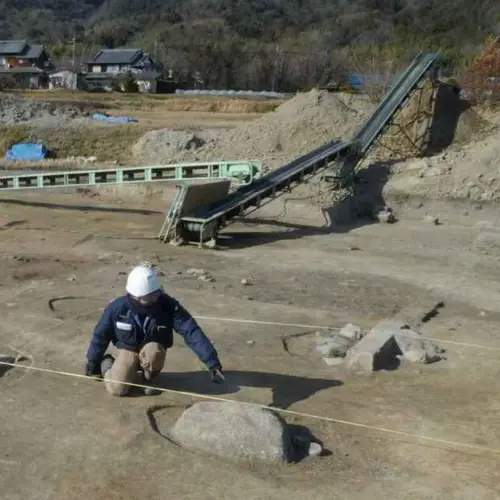Otagi Nenbutsu-Ji is a Buddhist temple in Kyoto, Japan that features over 1,200 stone figures representing Rakan, or disciples of the founder of Buddhism.
It doesn't appear in most of Kyoto's tourist guidebooks, but this Buddhist temple is quite noteworthy. Otago Nenbutsu-ji temple has something that sets it apart from the other 1,600 temples in the Japanese city. More accurately, it has over one thousand things that set it apart — the roughly 1,200 whimsical stone statues that symbolize Buddha's disciples that surround it.
The Otago Nenbutsu-ji temple sits on a hill at the base of Mt. Atago, hidden away in the western outskirts of Kyoto in the Arashiyama neighborhood. Its history is wrought with tragedy, but now, all is serene.
The inherent calm here can be partially attributed to the lack of tourists rather than the fact that it's a Buddhist temple, but adding to the sense of relaxation are its stone guardians. Many are meditative, but most are amusing — with a hint of mischievousness.

Aussie Assault/FlickrThe statues of Otagi Nenbutsu-ji are often whimsical and light-hearted.
Amid the figures that line the temple grounds, there are many laughing and smiling sculptures. There's a pair making a toast with saké, one reading with a child — even one with a portable cassette player. A few have become marked as places for tourists to place coins for luck.
Despite the traditional look and beauty of the buildings on the grounds of Otago Nenbutsu-ji Temple, it's the remarkable statues that inspire non-locals to make the trek into the hills. Even more notable than the carved figures, perhaps, is the man behind them. He is the Buddhist priest of Otago Nenbutsu-ji and almost entirely responsible for the defining uniqueness of the temple.
Kocho Nishimura: Temple Priest And Sculptor
Though the original temple was erected in the 8th century, it was Buddhist monk Kocho Nishimura that turned Otago Nenbutsu-ji into both an artistic and spiritual place. Nishimura began his tenure as the temple's priest in 1955 — but he was a talented sculptor as well and longed to bring the temple back from neglect.
Nishimura was also a teacher at Tokyo University of the arts and through the 1980s, he invited amateur artists from all over to learn stone sculpting techniques at the temple. The quality of the carvings is a testament to Nishimura's teaching ability, but they are many other things as well.
The sculptures are symbolic of Buddha's disciples, called Rakan. They're also memorials of people the artists have lost — or those they want to remember. They are also representative of the artists themselves.
One amateur sculptor answered, when asked if he was putting his wishes into this stone, "Well of course. This will be all that's left of me one day."
At the statues' consecration ceremony, the presiding priest validated the artists' intentions. "The spirit passes from the hands of the creators into the statues, giving them life."
Nishimura's son Kouei was so inspired by his father's idea that he left college to also become a priest at the temple himself.
The Origin Of Otago Nenbutsu-ji Temple

bethom33/FlickrA view of Otagiu Nenbutsu-ji Temple in Kyoto, Japan.
Empress Shōtoku, the 46th and 48th monarch of Japan according to the traditional order of succession, founded the historic temple in the 8th century, between 766 and 770. Its original location was in Higashiyama, not Kyoto, but not long afterward, Otago Nenbutsu-ji temple was washed away by the flooding of the nearby Kamo River.
A Buddhist priest named Senkan Naigu re-established the temple in the 10th century. Locals were grateful and installed a statue to protect the temple against bad luck. The statue was of Yaku-yoke Senju Kannon, and Naigu sculpted it himself.
The good luck seemed to hold for a few centuries, but the temple was destroyed again in the 13th century — during the Kamakura Period — as a result of a civil war. Workers moved the hall and gate to its Kyoto location in 1922 in order to preserve it, but the rebuilt main hall, however, was decimated again by a typhoon in 1950.
Rather than abandon hope, the newly-appointed priest of the temple in 1955, Nishimura, rebuilt it piece by piece. Nishimura did more than simple reconstruction though, he brought life back into Otago Nenbutsu-ji. He contributed some of the stone figures on the grounds himself, so his work is mixed with that of the other artists. All statues were added to the temple between 1981 and 1991, but look even older as they accumulate moss.
A Family Legacy
Kyoto may be known as the city of a thousand temples, but Otago Nenbutsu-ji will be remembered as the temple with a thousand Rakan. The extraordinary gift that Nishimura has given Japan in the forms of his dedication and talent should also be remembered. Nishimura died in 2003, but his son Kouei is still a priest at the temple.
Aside from his priest duties, Kouei is also a musician. He blends new-age synth with classical harmonies to create vivid electronic, meditative soundscapes. It is an art form that draws parallels to his father's contributions. "The music is a message," Kouei explains. "It's all around us, like the air that we don't notice until we realize that we are breathing it."
Experience Kouei's music from within the temple, as the stone statues look on from outside.
Next, read about the Kailasa Temple, that was chiseled by hand for more than 20 years, Then, find out if the mystery behind the Easter Island statues has finally been solved.

